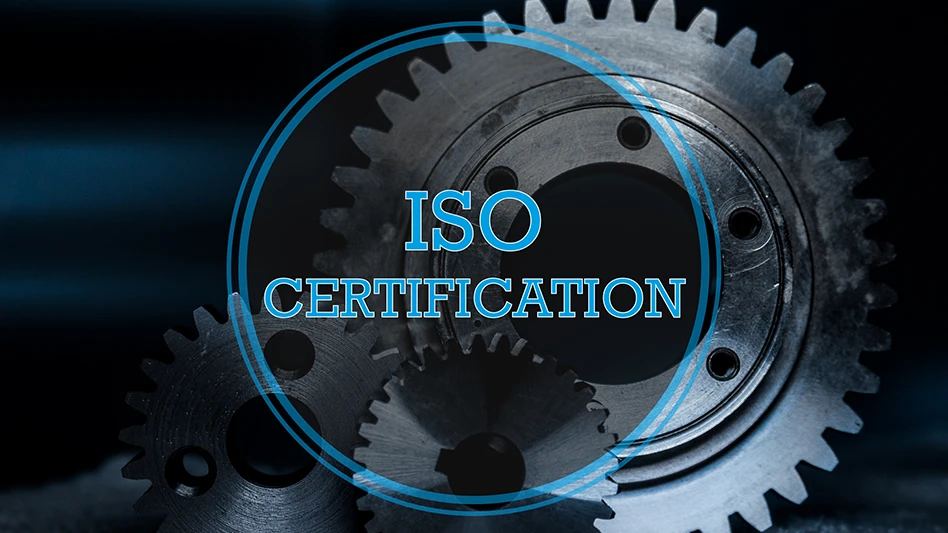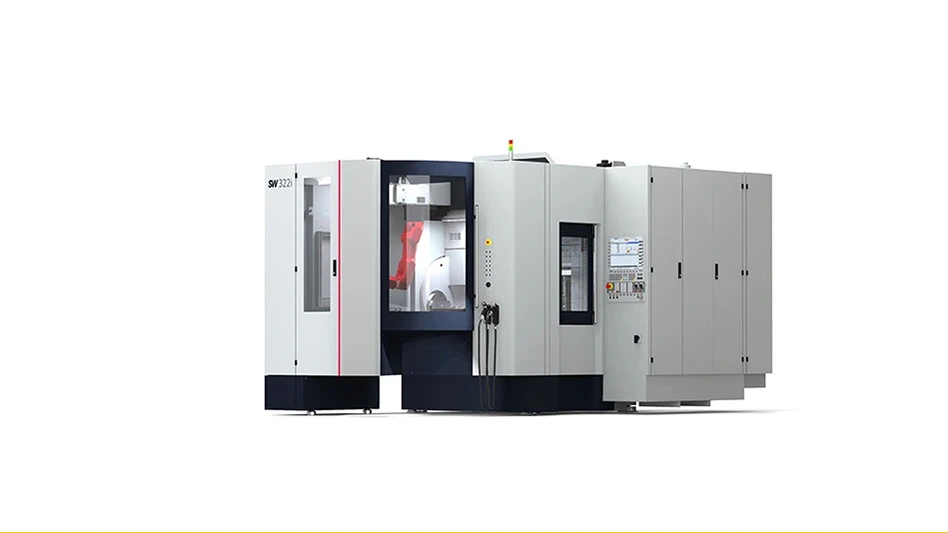 After verifying that LPB was the right surface treatment for their prosthetics, Exactech began implementing it into their manufacturing process. LPB operates using basic CNC code, and installs easily on existing machinery such as lathes, mills, and robots.There are more than 300,000 hip replacement surgeries each year in the United States. These operations are performed to alleviate pain and improve the function of hips damaged from disease or fracture. Modular hip prosthesis systems afford doctors the flexibility to choose properly sized components and treat a wide spectrum of patients, but are composed of several pieces that require precise dimensional and surface finish control to work together, perfectly. These prosthetics can be prone to fretting along the tapered connections between sub-components. As a result, surface micro-cracks form, causing a reduction in fatigue strength and significantly reducing the functional life of the prosthesis. Depending on the size and activity level of the patient, additional hip repair surgery can be required within 10 years.
After verifying that LPB was the right surface treatment for their prosthetics, Exactech began implementing it into their manufacturing process. LPB operates using basic CNC code, and installs easily on existing machinery such as lathes, mills, and robots.There are more than 300,000 hip replacement surgeries each year in the United States. These operations are performed to alleviate pain and improve the function of hips damaged from disease or fracture. Modular hip prosthesis systems afford doctors the flexibility to choose properly sized components and treat a wide spectrum of patients, but are composed of several pieces that require precise dimensional and surface finish control to work together, perfectly. These prosthetics can be prone to fretting along the tapered connections between sub-components. As a result, surface micro-cracks form, causing a reduction in fatigue strength and significantly reducing the functional life of the prosthesis. Depending on the size and activity level of the patient, additional hip repair surgery can be required within 10 years.
Exactech Inc., an orthopedic implant manufacturer based out of Gainesville, FL, began searching for a new way to mitigate fretting initiated fatigue. Adding a layer of residual compression to a part shows to retard fatigue crack initiation and growth. Traditional surface treatment methods, such as deep rolling, did not significantly improve fatigue and lacked the process control required for manufacturing. The company then investigated more modern surface enhancement technologies. Laser shocking added a deep compressive layer, but was costly, left an irregular surface, and required lengthy processing times off sight, a major logistical limitation. Finally, in Low Plasticity Burnishing (LPB), Exactech found a process that provided the necessary combination of depth of compression to mitigate fretting fatigue, dimensional control, and surface finish that is integrated, easily, into their machining operations.
Lambda Technologies, based out of Cincinnati, OH, developed LPB in order to impart controlled residual compressive stresses in metal components, extending service life and performance. The surface treatment has been successful on aerospace components, many of which are from materials similar to hip replacements. LPB uses a single pass of a smooth, free-rolling ball under controlled force to create a deep, stable layer of beneficial, compressive residual stress in the component surface. This makes the piece resistant to a variety of damage mechanisms, such as foreign object damage (FOD), stress corrosion cracking (SCC), high cycle fatigue (HCF), pitting, and fretting fatigue.
"At our first meeting, it became apparent that Lambda's approach was innovative and unique," states Edmund Loftus, Exactech's development engineer for the project. "Their focus was on understanding our application and then demonstrating how the LPB process could substantially improve fatigue performance."
 Overall fatigue strength increased by almost 40% in LPB processed replacement hips.Using finite element modeling of the applied stresses, and Lambda's patented fatigue design protocol, creation of a custom residual stress field was for the application of LPB to the hip implants. Simulation of real life conditions on a model obtained the loads applied in service and determined the required depth of compression. Several factors needed to be taken into account: re-allocation of residual tensile stresses, component distortion, and the cost of processing. Exactech had to be sure that the surface enhancement treatment chosen would not simply move the location of maximum stress, weakening another section. LPB prevents this by evenly dispersing the equilibrating tensile stresses during the design phase. Elimination of component distortion was necessary, because of the tight specifications for hip implants. The component pieces fit together so neatly that the slightest imperfection could render them useless. Development of the LPB processing was so the critical dimensions in treated parts did not change. The ease of LPB development and processing gave Exactech a way to deliver a superior product without passing on major cost increases to patients.
Overall fatigue strength increased by almost 40% in LPB processed replacement hips.Using finite element modeling of the applied stresses, and Lambda's patented fatigue design protocol, creation of a custom residual stress field was for the application of LPB to the hip implants. Simulation of real life conditions on a model obtained the loads applied in service and determined the required depth of compression. Several factors needed to be taken into account: re-allocation of residual tensile stresses, component distortion, and the cost of processing. Exactech had to be sure that the surface enhancement treatment chosen would not simply move the location of maximum stress, weakening another section. LPB prevents this by evenly dispersing the equilibrating tensile stresses during the design phase. Elimination of component distortion was necessary, because of the tight specifications for hip implants. The component pieces fit together so neatly that the slightest imperfection could render them useless. Development of the LPB processing was so the critical dimensions in treated parts did not change. The ease of LPB development and processing gave Exactech a way to deliver a superior product without passing on major cost increases to patients.
Overall fatigue strength increased by almost 40% in LPB processed replacement hips. Service life extended more than ten times. The depth of the LPB treatment was sufficient to eliminate fatigue initiation from fretting induced micro-cracking, providing a fatigue strength superior to un-fretted material, and all without changing the material or prosthesis design.
Rigorous testing performed by Exactech ensured that LPB treated prosthetics met FDA standards. Results showed that the enhancement in no way affected the safe use of a modular hip replacement and the process is fully approved by the FDA for production.
Ann Kelly, senior quality engineer for Exactech during the LPB development process states, "One of the most critical aspects of implementing LPB in our manufacturing operation was the need to ensure that the equipment and processes were properly qualified. Lambda's ability to extract manufacturing performance data in real time helped to expedite the qualification process. We are certain, within a very tight tolerance, that when a part has been LPB processed the compressive residual stress distribution is precisely what was specified by the engineer."
After verifying that LPB was the right surface treatment for their prosthetics, Exactech began implementing it into their manufacturing process. LPB operates using basic CNC code, and installs easily on existing machinery such as lathes, mills, and robots. Processing can be on a dedicated unit or simply by switching tools on the same machine used for manufacturing.
Lambda provided a complete turnkey LPB machining process for the Exactech manufacturing facility, including the required CNC tool control code and pressure files that define the burnishing force. The use of a CNC controlled toolpath delivers absolute repeatability. LPB undergoes continuous, closed-loop monitoring. The computer-operated servo-control makes pressure adjustments in real time, ensuring that each part is treated with the precise amount of force required. The system provides automatic pass/fail notification for each treated component, and QA personnel are informed immediately if there is a system malfunction or part rejection. Statistical process control (SPC) information is collected, constantly, and each piece is tracked individually by serial number.
By implementing LPB, Exactech and other major implant manufacturers are now able to offer safer, stronger prosthetics without a major increase in cost for their clients. With the newly reinforced hips, patients require fewer follow-up surgeries and deal with less chronic pain.
Dr. Gary Miller, executive vice president of research and development summed up the project, "Exactech has always valued continuous quality improvement in its product design and development activities. Improvements continue to be important as patients impose ever-greater demands on their devices. Through our partnership with Lambda, we have now implemented an innovative and cost effective means of applying cutting edge technology in the continuing quest to improve our components."
Lambda Technologies Cincinnati, OH lambdatechs.com
Exactech Gainesville, Florida exac.com

Explore the September 2011 Issue
Check out more from this issue and find your next story to read.
Latest from Today's Medical Developments
- Tariffs threaten small business growth, increase costs across industries
- Feed your brain on your lunch break at our upcoming Lunch + Learn!
- Robotics action plan for Europe
- Maximize your First Article Inspection efficiency and accuracy
- UPM Additive rebrands to UPM Advanced
- Master Bond’s LED415DC90Med dual-curable adhesive
- Minalex celebrates 60 years of excellence in miniature aluminum extrusions
- Tormach’s Chip Conveyor Kit for the 1500MX CNC Mill





